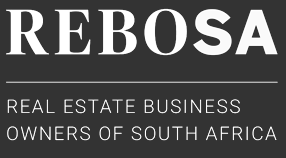House Price Growth Slows
Category Property market overview
House price data suggests that a period of economic weakness in South Africa may re-emerge after a slightly stronger performance a few months ago.
John Loos, a household and property sector analyst at First National Bank, said it also appeared increasingly likely that 2017 would be the third consecutive year of slowing average annual house-price growth and the second consecutive year in which house prices would decline in consumer-inflation-adjusted, or real, terms.
Loos said month-on-month seasonally adjusted house-price growth suggested renewed weakness in the economy.
He said seasonally adjusted growth accelerated month-on-month from late last year to a high of 0.88 percent in March this year.
But Loos said slow growth was evident from April to 0.04 percent this month.
"This renewed month-on-month house-price-growth slowdown has been accompanied by a significant dip in the Manufacturing Purchasing Managers' Index (PMI) in April and in June," he said.
Loos said dips in month-on-month house-price growth often coincided with a slowdown in the PMI, suggesting that both variables tracked the economy quite closely.
He said the renewed slowdown in month-on-month house-price growth had been accompanied by a resumption of a month-on-month decline in the South African Reserve Bank's leading business cycle indicator in recent months.
The leading indicator has declined month-on-month for three consecutive months to May, after increasing for the previous seven months.
Loos said the average year-on-year house-price-growth rate for the first seven months of this year was 2.8 percent, which was significantly lower than the 5 percent recorded for the past calendar year and well down on the post-2008/9 recession high of 7.2 percent.
He said real average year-on-year house-price growth weakened to -2.9 percent in the first six months of this year from the -1.2 percent decline last year.
Loos said that, by June this year, real house prices had declined -4.5 percent since the post-2008/9 recession high in December 2015 and 19.3 percent from the all-time high in June 2007.
However, Loos said that, despite a mediocre performance in recent years, the average real house price was 63.8 percent above the level reached at the end of 2000, just before house-price inflation started to accelerate rapidly.
Loos added that, without adjusting house-price growth for inflation, the average house price this month was 314.8 percent higher than the level at the end of 2000.
By comparison, the price of consumer goods and services, as measured by the Consumer Price Index, was 153.7 percent higher over virtually the same period, he said.
But Loos said the continuing price correction in inflation-adjusted house-price growth was essential, because South Africa had moved to having an economy with almost zero growth.
"We believe that high real house prices will have to decline significantly to reflect this longer-term economic weakness that appears to have set in," he said.
Loos said the onset of interest-rate cutting by the Reserve Bank was a possible stimulus for house-price growth, although the 0.25 percentage point cut in the repo rate last month would be insufficient to move the housing market significantly.
But if this reduction in the repo rate was the start of a series of cuts, it was conceivable that house-price growth next year could be mildly stronger than the year-to-date average year-on-year price growth rate of 2.8 percent, he said.
Article courtesy of IOL Property
Author: The Sunday Independent




